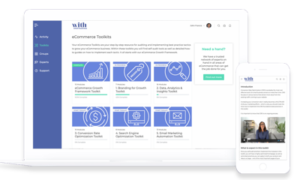What is audience targeting in Google Ads?
Google Ads offer a variety of audience targeting options. You can add audience targeting to ad groups and reach people based on who they are, their interests and habits, what they’re actively researching or how they have interacted with your business.
Google Ads also offers demographic targeting. Even though most people know that Google Ads offers many targeting capabilities, some are unaware that demographic targeting exists along with its inherent benefits. In fact, despite being one of the most valuable Ads features, it’s one of the most under-utilized.
With demographic targeting in Google Ads, you can reach a specific set of potential customers who are likely to be within a particular age range, gender, parental status or household income. For instance, if you run a fitness studio exclusively for women, demographic targeting could help you avoid showing your ads to men.
It provides you with an effective way to narrow down your audience to those who are likely to be within specific demographic groups (age, gender, parental status, income).
Another targeting tool with Google Ads is the location targeting tool which enables your ads to become visible in the geographic locations that you choose. The target location can be:
- Countries
- Areas within a country
- A radius around a location or location groups, which can include places of interest, your business locations or ranked demographics.
Why should I add audience targeting in Google Ads?
Audience targeting can boost your campaign’s performance by reaching people browsing websites, using apps or watching videos. Read the personalized advertising policy (formerly known as interest-based advertising) to help improve the experience for users and advertisers alike.
You can use the target audiences you have defined for your brand to set the audience targeting for your ads campaign.
Utilizing demographic targeting in your Google Ads can be critical for reaching your target audience in a cost effective manner.
Too often advertisers place so much emphasis on keyword-level targeting that they forget about the actual person behind the search.
Demographic targeting enables you to refine your audience targeting further and can be used to capture additional audience data. For example, if you’re a company selling strollers, you can target based on parental status, and more specifically, parents of toddlers.
It allows advertisers to refine their targeting on a granular level, improving their reach while also reducing wasted ad spend on users that don’t fit their target audience.
Using the location targeting tool helps you focus your ads on the areas where you’ll find the right audience, and restrict it in areas where you won’t.
If you are looking to increase your return on investment (ROI) this type of targeting is the one you are looking for.
Location by far one of the things you must pay more attention to when advertising on Google Ads. It doesn’t matter how great your ad is, it is likely not to perform as well if it doesn’t appear in the right places.
To have a successful ad you must reach your audiences where they are and where your business can serve them and Google Ads location targeting allows you to do so.


